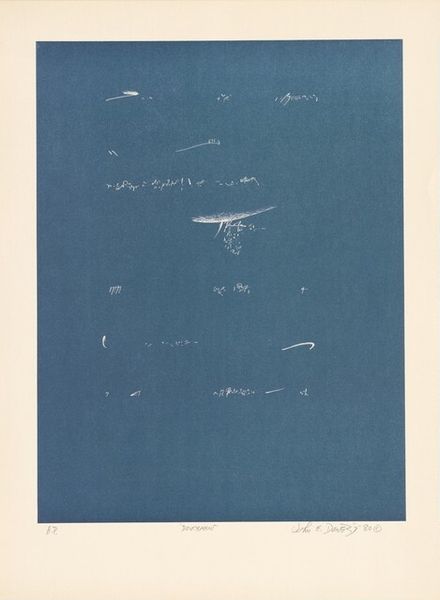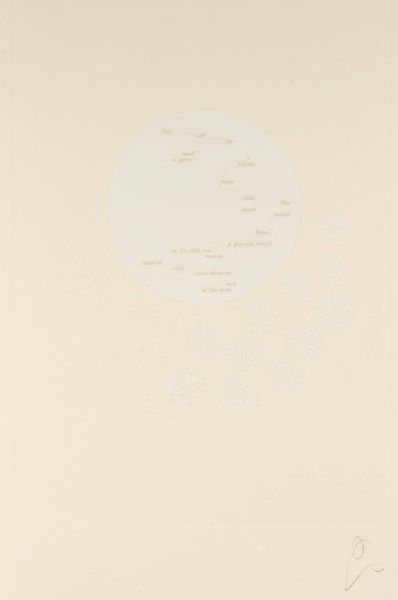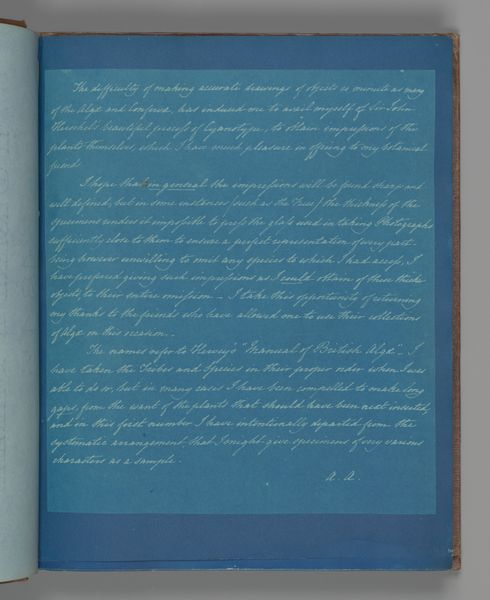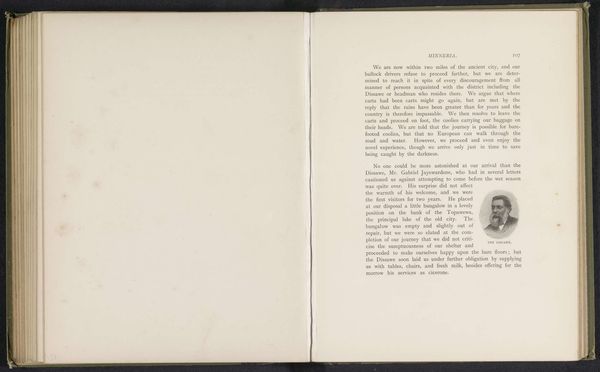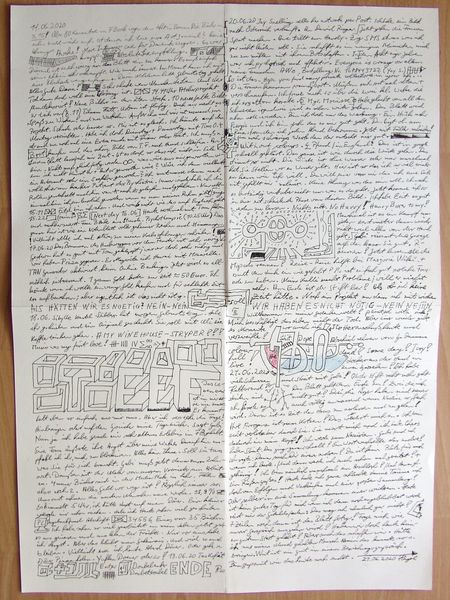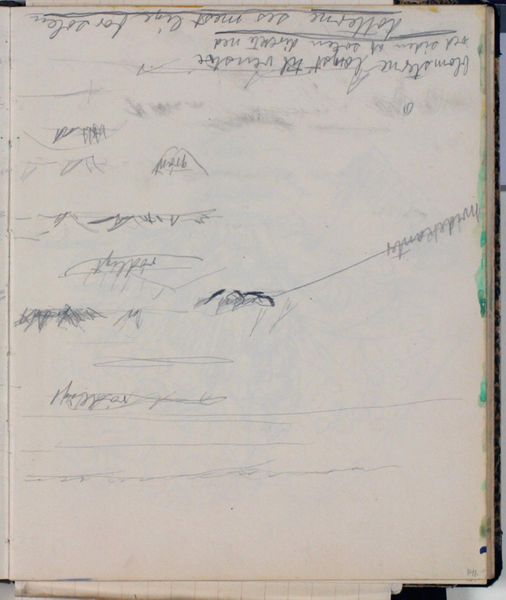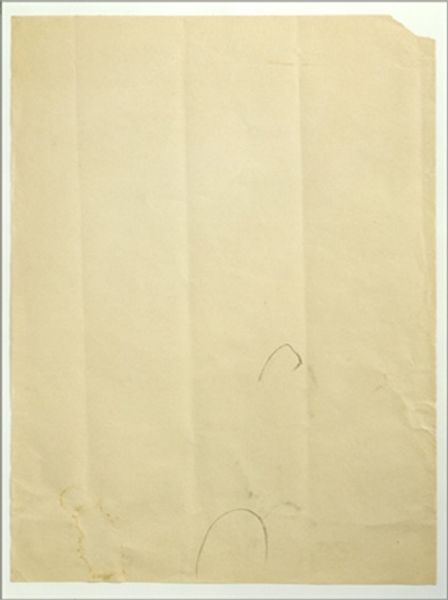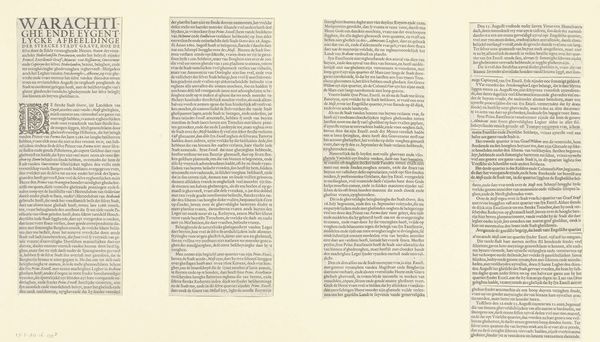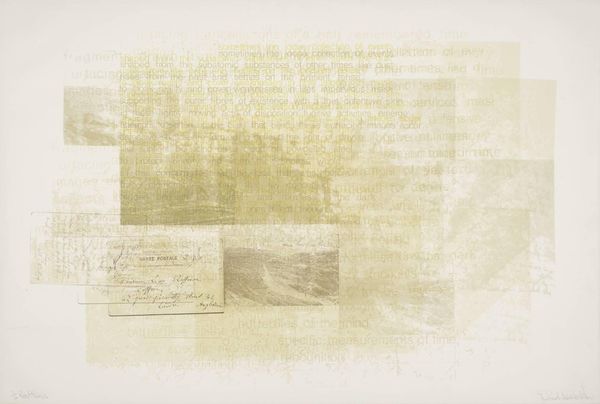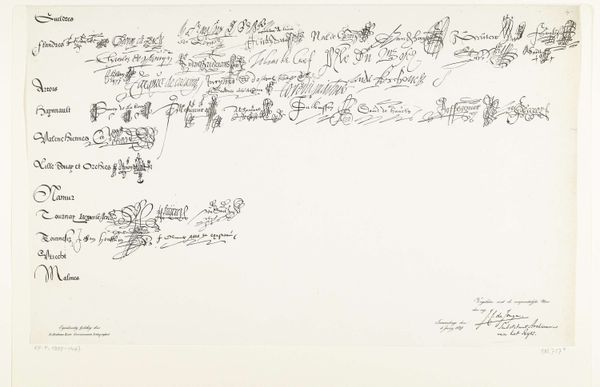
Composition (Tribute to Pushkin). Папір, Акварель, Білило, Чорнило. 36х27,5. 1974
0:00
0:00
hryhoriihavrylenko
Private Collection
drawing, paper, ink
#
portrait
#
drawing
#
soviet-nonconformist-art
#
paper
#
ink
#
abstraction
Copyright: Hryhorii Havrylenko,Fair Use
Curator: Here we have Hryhorii Havrylenko's "Composition (Tribute to Pushkin)," made in 1974 using paper, ink, and watercolor. Editor: It's quite understated, almost melancholic with its pale blue background. The handwritten poem encircled by a halo feels like a ghostly echo. What does this piece tell us about its time and place, especially concerning its materials and the labor involved? Curator: Let’s consider the context of Soviet Nonconformist Art. Official art demanded socialist realism. But here, the artist is working with simple materials, accessible to most, circumventing the official channels that controlled access to expensive art supplies like oils and canvases. Editor: So the very act of using paper, ink, and watercolor becomes a quiet act of resistance? Curator: Precisely. Think about the labor, too. Instead of mass-produced imagery, we have the intimacy of the hand. Each letter painstakingly written, a direct connection to Pushkin, yet subtly defiant. Even the “mistakes” in handwriting and imperfections inherent to the media suggest unmediated expression. Does that make sense? Editor: Absolutely. It subverts the expectation of flawless reproduction prevalent in propaganda. It's a material statement, about the value of individual expression, using what’s available. It challenges our conventional notions of high art. Curator: What does the tribute to Pushkin mean here? Is he merely commemorating the poet, or perhaps appropriating his works and recontextualizing him in a world, that shares some parallels but also presents contradictions, for him? Editor: Interesting, seeing art not as divine inspiration, but tangible matter born of work. Thanks for bringing materiality into focus! Curator: Likewise, recognizing the constraints and subversions within material choices reveals layers of meaning within seemingly simple art.
Comments
No comments
Be the first to comment and join the conversation on the ultimate creative platform.
